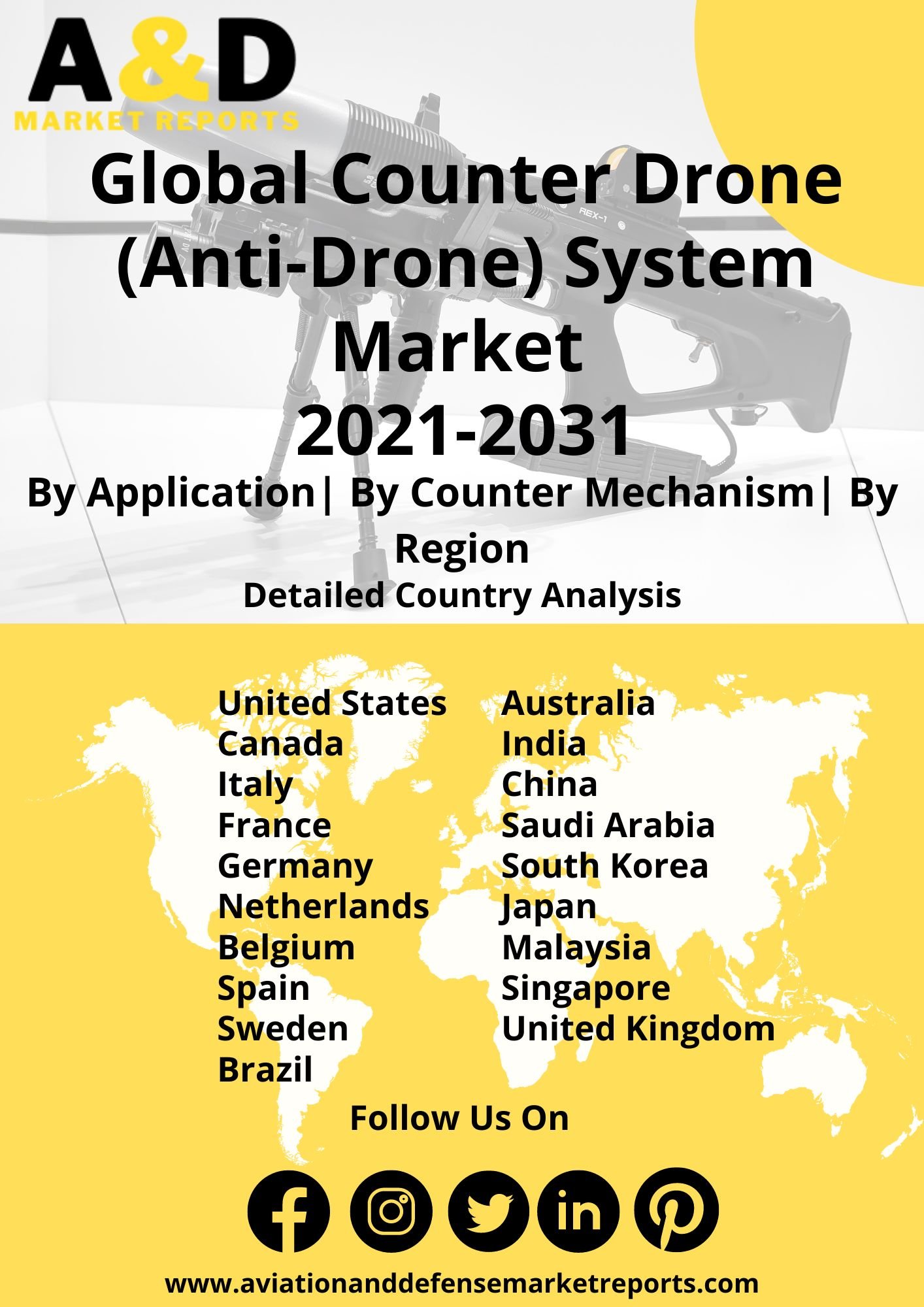Description
Counter Drone Market
Frequently Asked Questions of Counter Drone Market
The payload capabilities of drones, which range from a few grams to several kilos, are extremely diverse. The usage of small drones for a variety of tasks has increased during the past few years. Drones are becoming a greater threat to society, public safety, and individual privacy at the same time. Drones offer an ever-expanding spectrum of applications, from weapon carriers to spying instruments, and they allow an attacker to reach any target in any location without harming troops. To lessen and eliminate the impact of drones, counter-drone technology for detection, deterrence, and destruction of incoming drone threats must be developed and deployed.
Devices that detect and/or intercept unmanned aircraft systems while they are in flight are referred to as counter-UAS or C-UAS, also known as counter-drone (anti-drone) technology. Technology for countering defense unmanned aerial systems (UAS) is constantly evolving as drone use increases. C-UAS technology has advanced due to worries about the threat that drones pose in both military and civilian contexts.
Major factors driving Counter Drone Market Growth
As per counter-drone market analysis, there are 2 types of anti-UAS measures, i.e. drone detection, and drone mitigation or interception. Radar, RF sensors, and PTZ cameras are among the drone-detecting methods used to find them. If a drone flies inside the perimeter of a protected area, drone detection will pick it up. Drone mitigation or interception works by physically or technologically impeding drone flight. Examples of drone mitigation technology include security drones, spoofers, nets, and drone jammers.
The growing defense budget and the consequent increase in military procurement are expected to be one of the main factors which are poised to affect the market growth for counter-drone market growth. It is noted that most economies have invested heavily in attack drones which makes counter-drone systems an equally important military equipment that improves the survivability of personnel as well as armed forces.
Trends influencing the Counter-Drone Market Size
Radar and RF detection are the most often used technologies for drone detection. In a range of circumstances, including urban and noisy locations, radar and RF detection can be utilized to enhance airspace security. A multi-layered system that offers users improved coverage and protection can be created using RF and radar in conjunction.
Counter-Drone Market Forecast & Dynamics
Counter-drone technology is already in use in a variety of military and commercial applications. C-UAS systems are used by the US military for base protection in other countries. The use of portable and mobile systems to protect ground units and convoys is also gaining popularity. Counter-drone technology is already in use in civilian settings in a variety of ways. Airports, stadiums, jails, enterprises, and large events such as the Super Bowl have all deployed C-UAS for airspace protection in the United States.
The deployment of drone countermeasures such as signal jammers is restricted in the United States to federal agencies such as the US Department of Defense, Department of Homeland Security, and Department of Justice. In the United States, drone detection countermeasures such as RF and radar are authorized. Because drone detection is allowed, it is a more viable and practical security solution. Drone detection is already being used in several contexts in the United States to improve airspace security and reduce drone hazards.
Counter Drone Market Analysis for Recent Developments
A counter-drone system created by the Indian Defence Research and Development Organization (DRDO) has been installed close to the Red Fort area to deal with any impending security threats or drones/kites. This system was developed to counter threats from aerial platforms and unidentified aerial vehicles. The technology can locate and deactivate drones of any size within a 4 km range, according to DRDO officials. The technology is also poised to promote the agenda for indigenous development of technologies thus boosting the growth associated with local sourcing.
These anti-drone systems, according to DRDO officials, use a variety of sensors to locate, identify, and track airborne drones. They can share the data with related systems to make countermeasures possible, preventing them from carrying out the planned action (soft killing), and/or destroying them (hard kill). Radars are employed in the drone detection process.
The global landscape of counter-drone technology has seen significant advancements to address the challenges posed by the proliferation of unmanned aerial systems. Counter-drone market analysis solutions have become essential for safeguarding critical infrastructure, public events, and sensitive areas against potential security threats. Technological innovations in counter-drone market size systems include the use of radar, radio frequency (RF) detection, and electro-optical/infrared sensors to detect, track, and neutralize unauthorized drones. Machine learning algorithms and artificial intelligence enhance the ability to distinguish between legitimate and rogue drones, minimizing false alarms.
The integration of electronic countermeasures, such as radio frequency jammers and signal disruptors, allows for the neutralization of hostile drones by disrupting their communication and control links. Directed energy weapons and kinetic solutions provide additional options for mitigating drone threats. Global collaboration and regulatory frameworks are evolving to establish guidelines for responsible and legal counter-drone market report operations. These efforts seek to balance security concerns with privacy considerations and ensure the safe integration of counter-drone technology into diverse environments. The ongoing evolution of counter-drone technology in 2023 signifies a commitment to developing robust and adaptable solutions to mitigate the risks associated with the increasing prevalence of drones in various sectors.







